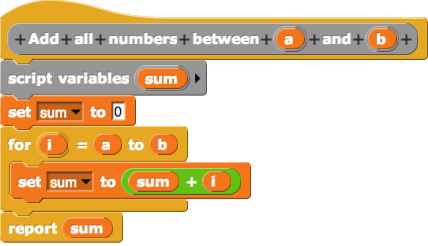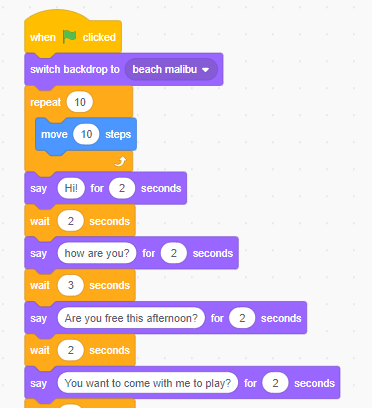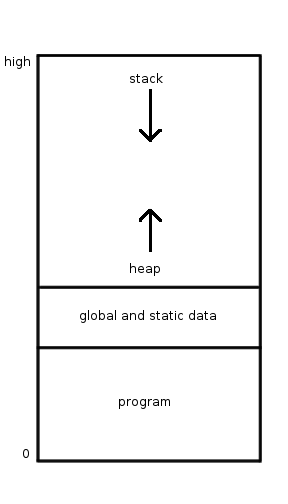|
Raptor (programming Language)
RAPTOR, the Rapid Algorithmic Prototyping Tool for Ordered Reasoning, is a graphical authoring tool created by Martin C. Carlisle, Terry Wilson, Jeff Humphries and Jason Moore. The software is hosted and maintained by former US Air Force Academy and current Texas A&M University professor Martin Carlisle. RAPTOR allows users to write and execute programs using flowcharts. The simple language and graphical components of RAPTOR are designed to teach the major ideas of computer programming to students. It is typically used in academics to teach introductory programming concepts as well. See also Other educational programming languages include: * Alice (software) Alice is an object-based educational programming language with an integrated development environment (IDE). Alice uses a drag and drop environment to create computer animations using 3D models. The software was developed first at University of ... * Flowgorithm * LARP * Visual Logic * Scratch References E ... [...More Info...] [...Related Items...] OR: [Wikipedia] [Google] [Baidu] |
Structured Programming
Structured programming is a programming paradigm aimed at improving the clarity, quality, and development time of a computer program by making extensive use of the structured control flow constructs of selection ( if/then/else) and repetition (while and for), block structures, and subroutines. It emerged in the late 1950s with the appearance of the ALGOL 58 and ALGOL 60 programming languages, with the latter including support for block structures. Contributing factors to its popularity and widespread acceptance, at first in academia and later among practitioners, include the discovery of what is now known as the structured program theorem in 1966, and the publication of the influential "Go To Statement Considered Harmful" open letter in 1968 by Dutch computer scientist Edsger W. Dijkstra, who coined the term "structured programming". Structured programming is most frequently used with deviations that allow for clearer programs in some particular cases, such as when exception h ... [...More Info...] [...Related Items...] OR: [Wikipedia] [Google] [Baidu] |
Flowchart
A flowchart is a type of diagram that represents a workflow or process. A flowchart can also be defined as a diagrammatic representation of an algorithm, a step-by-step approach to solving a task. The flowchart shows the steps as boxes of various kinds, and their order by connecting the boxes with arrows. This diagrammatic representation illustrates a solution model to a given Problem solving, problem. Flowcharts are used in analyzing, designing, documenting or managing a process or program in various fields. * ''Document flowcharts'', showing controls over a document-flow through a system * ''Data flowcharts'', showing controls over a data-flow in a system * ''System flowcharts'', showing controls at a physical or resource level * ''Program flowchart'', showing the controls in a program within a system Notice that every type of flowchart focuses on some kind of control, rather than on the particular flow itself. However, there are some different classifications. For example ... [...More Info...] [...Related Items...] OR: [Wikipedia] [Google] [Baidu] |
Educational Programming Languages
Education is a purposeful activity directed at achieving certain aims, such as transmitting knowledge or fostering skills and character traits. These aims may include the development of understanding, rationality, kindness, and honesty. Various researchers emphasize the role of critical thinking in order to distinguish education from indoctrination. Some theorists require that education results in an improvement of the student while others prefer a value-neutral definition of the term. In a slightly different sense, education may also refer, not to the process, but to the product of this process: the mental states and dispositions possessed by educated people. Education originated as the transmission of cultural heritage from one generation to the next. Today, educational goals increasingly encompass new ideas such as the liberation of learners, skills needed for modern society, empathy, and complex vocational skills. Types of education are commonly divided into formal ... [...More Info...] [...Related Items...] OR: [Wikipedia] [Google] [Baidu] |
Visual Programming Languages
In computing, a visual programming language (visual programming system, VPL, or, VPS) is any programming language that lets users create programs by manipulating program elements ''graphically'' rather than by specifying them ''textually''. A VPL allows programming with visual expressions, spatial arrangements of text and graphic symbols, used either as elements of syntax or secondary notation. For example, many VPLs (known as ''dataflow'' or ''diagrammatic programming'') are based on the idea of "boxes and arrows", where boxes or other screen objects are treated as entities, connected by arrows, lines or arcs which represent relations. Definition VPLs may be further classified, according to the type and extent of visual expression used, into icon-based languages, form-based languages, and diagram languages. Visual programming environments provide graphical or iconic elements which can be manipulated by users in an interactive way according to some specific spatial grammar for p ... [...More Info...] [...Related Items...] OR: [Wikipedia] [Google] [Baidu] |
Scratch (programming Language)
Scratch is a high-level block-based visual programming language and website aimed primarily at children as an educational tool for programming, with a target audience of ages 8 to 16. Users on the site, called Scratchers, can create projects on the website using a block-like interface. Projects can be exported to HTML5, Android apps, Bundle (macOS) and EXE files using external tools. The service is developed by the MIT Media Lab, has been translated into 70+ languages, and is used in most parts of the world. Scratch is taught and used in after-school centers, schools, and colleges, as well as other public knowledge institutions. As of May 8, 2022, community statistics on the language's official website show more than 104 million projects shared by over 90 million users, over 686 million total projects ever created (including unshared projects), and more than 100 million monthly website visits. Scratch takes its name from a technique used by disk jockeys called "scratch ... [...More Info...] [...Related Items...] OR: [Wikipedia] [Google] [Baidu] |
Visual Logic (programming Language)
Visual Logic is a graphical authoring tool which allows students to write and execute programs using flowcharts. It is typically used in an academic setting to teach introductory programming concepts. See also * Alice * Flowgorithm * Raptor Raptor or RAPTOR may refer to: Animals The word "raptor" refers to several groups of bird-like dinosaurs which primarily capture and subdue/kill prey with their talons. * Raptor (bird) or bird of prey, a bird that primarily hunts and feeds on v ... * Scratch References External links * Visual programming languages Educational programming languages educational software Pedagogic integrated development environments {{graphics-software-stub ... [...More Info...] [...Related Items...] OR: [Wikipedia] [Google] [Baidu] |
Flowgorithm (programming Language)
Flowgorithm is a graphical authoring tool which allows users to write and execute programs using flowcharts. The approach is designed to emphasize the algorithm rather than the syntax of a specific programming language. The flowchart can be converted to several major programming languages. Flowgorithm was created at Sacramento State University. Origin of name The name is a portmanteau of "flowchart" and "algorithm". Supported programming languages Flowgorithm can interactively translate flowchart programs into source code written in other programming languages. As the user steps through their flowchart, the related code in the translated program is automatically highlighted. The following programming languages are supported: Multilingual support Besides English, Flowgorithm supports other spoken languages. These are: Graphical shapes Flowgorithm combines the classic flowchart symbols and those used by SDL diagrams. The color of each shape is shared by the associated generated ... [...More Info...] [...Related Items...] OR: [Wikipedia] [Google] [Baidu] |
Alice (software)
Alice is an object-based educational programming language with an integrated development environment (IDE). Alice uses a drag and drop environment to create computer animations using 3D models. The software was developed first at University of Virginia in 1994, then Carnegie Mellon (from 1997), by a research group led by Randy Pausch. Origin of name According to Randy Pausch, the name “Alice” comes from author Lewis Carroll, who wrote Alice’s Adventures in Wonderland. "Carroll was a mathematician, novelist, and photographer. Most important, he could do intellectually difficult things but also realized the most powerful thing was to be able to communicate clearly and in an entertaining way. This inspires our efforts to make something as complex as computer programming easy and fun." Purpose Alice was developed to address four core problems in educational programming: #Alice is designed solely to teach programming theory without the complex semantics of production lang ... [...More Info...] [...Related Items...] OR: [Wikipedia] [Google] [Baidu] |
Educational Programming Language
An educational programming language is a programming language that is designed mostly as an instrument for learning, and less as a tool for writing programs to perform work. Types of educational programming languages Assembly languages Originally, machine code was the first and only way to program computers. Assembly language was the next type of language used; thus, is one of the oldest families of computer languages in use today. Many dialects and implementations are available, usually some for each computer processor architecture. It is very basic and termed a low level programming language. It is one of the more difficult languages to work with being untyped and rigid, but this is how computers work at low level. Several simplified dialects exist for education. Low level languages must be written for a specific processor architecture and cannot be written or taught in isolation without referencing the processor for which it was written. Unlike higher level languages, u ... [...More Info...] [...Related Items...] OR: [Wikipedia] [Google] [Baidu] |
Texas A&M University
Texas A&M University (Texas A&M, A&M, or TAMU) is a public, land-grant, research university in College Station, Texas. It was founded in 1876 and became the flagship institution of the Texas A&M University System in 1948. As of late 2021, Texas A&M has the largest student body in the United States, and is the only university in Texas to hold simultaneous designations as a land, sea, and space grant institution. In 2001, it was inducted into the Association of American Universities. The university's students, alumni, and sports teams are known as Aggies, and its athletes compete in eighteen varsity sports as a member of the Southeastern Conference. The university was the first public higher-education institution in Texas; it opened for classes on October 4, 1876, as the Agricultural and Mechanical College of Texas (A.M.C.) under the provisions of the 1862 Morrill Land-Grant Act. In the following decades, the college grew in size and scope, expanding to its largest enro ... [...More Info...] [...Related Items...] OR: [Wikipedia] [Google] [Baidu] |
Imperative Programming
In computer science, imperative programming is a programming paradigm of software that uses statements that change a program's state. In much the same way that the imperative mood in natural languages expresses commands, an imperative program consists of commands for the computer to perform. Imperative programming focuses on describing ''how'' a program operates step by step, rather than on high-level descriptions of its expected results. The term is often used in contrast to declarative programming, which focuses on ''what'' the program should accomplish without specifying all the details of ''how'' the program should achieve the result. Imperative and procedural programming Procedural programming is a type of imperative programming in which the program is built from one or more procedures (also termed subroutines or functions). The terms are often used as synonyms, but the use of procedures has a dramatic effect on how imperative programs appear and how they are constructed ... [...More Info...] [...Related Items...] OR: [Wikipedia] [Google] [Baidu] |
US Air Force Academy
The United States Air Force Academy (USAFA) is a United States service academy in El Paso County, Colorado, immediately north of Colorado Springs. It educates cadets for service in the officer corps of the United States Air Force and United States Space Force. It is the youngest of the five service academies, having graduated its first class in 1959, but is the third in seniority. Graduates of the academy's four-year program receive a Bachelor of Science degree and are commissioned as second lieutenants in the U.S. Air Force or U.S. Space Force. The academy is also one of the largest tourist attractions in Colorado, attracting approximately a million visitors each year. Admission is highly competitive, with nominations divided equally among Congressional districts. Recent incoming classes have had about 1,200 cadets; since 2012, around 20% of each incoming class does not graduate. During their tenure at the Academy, cadets receive tuition, room and board, and a monthly ... [...More Info...] [...Related Items...] OR: [Wikipedia] [Google] [Baidu] |






